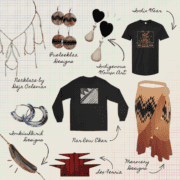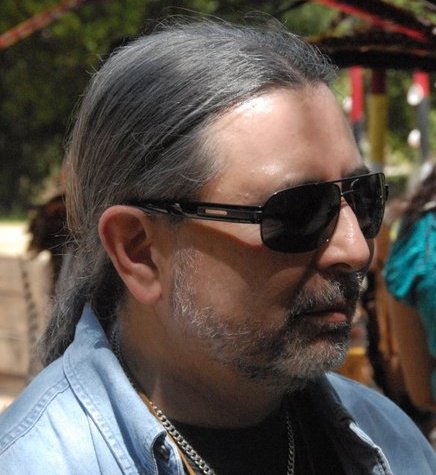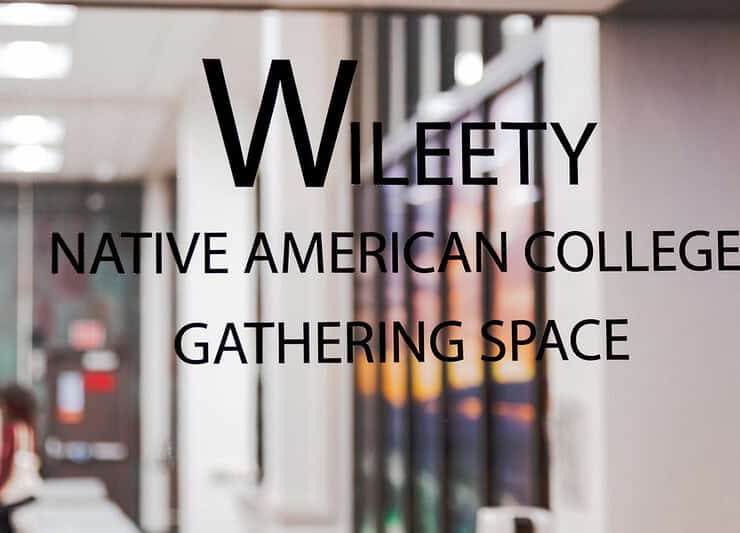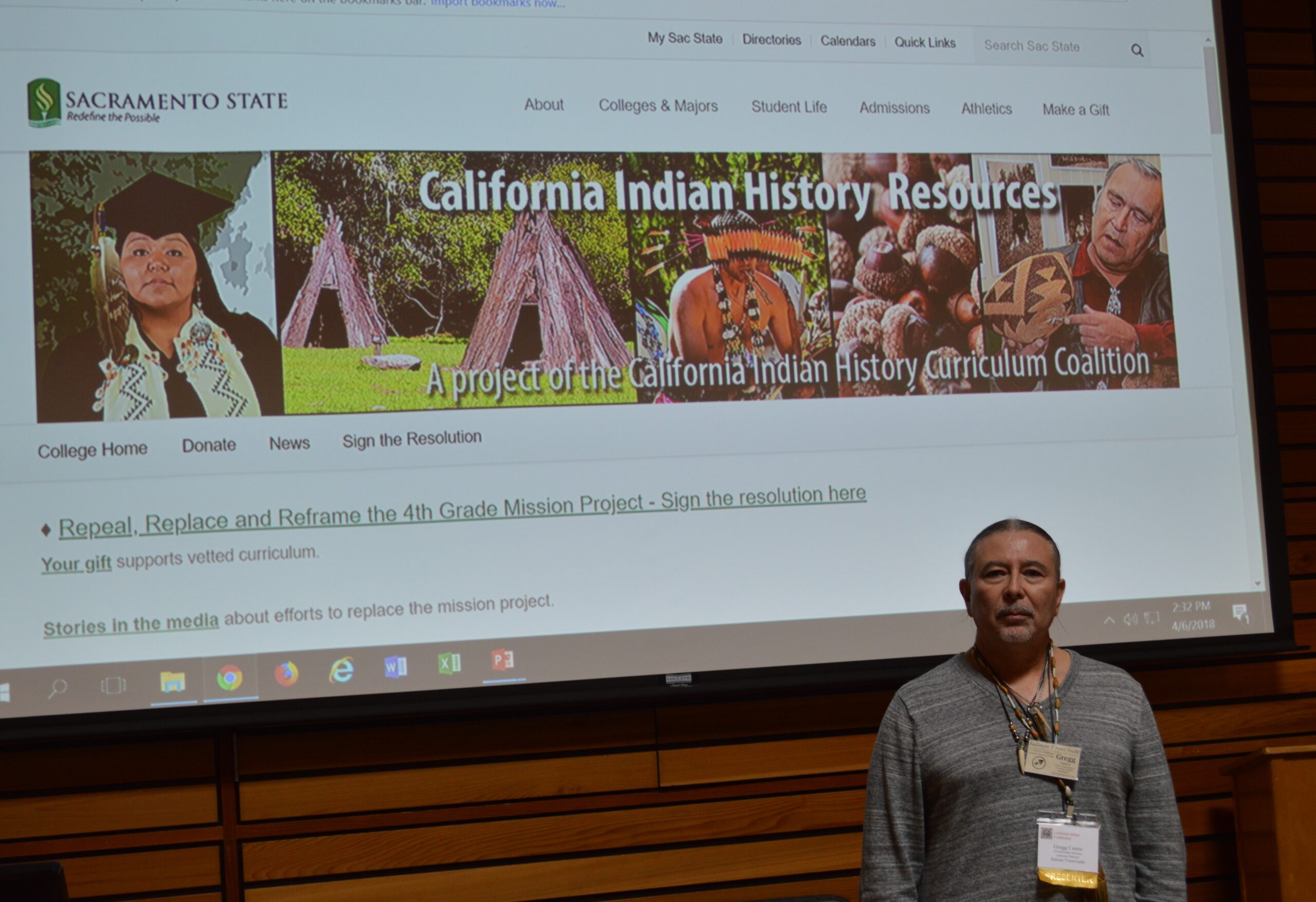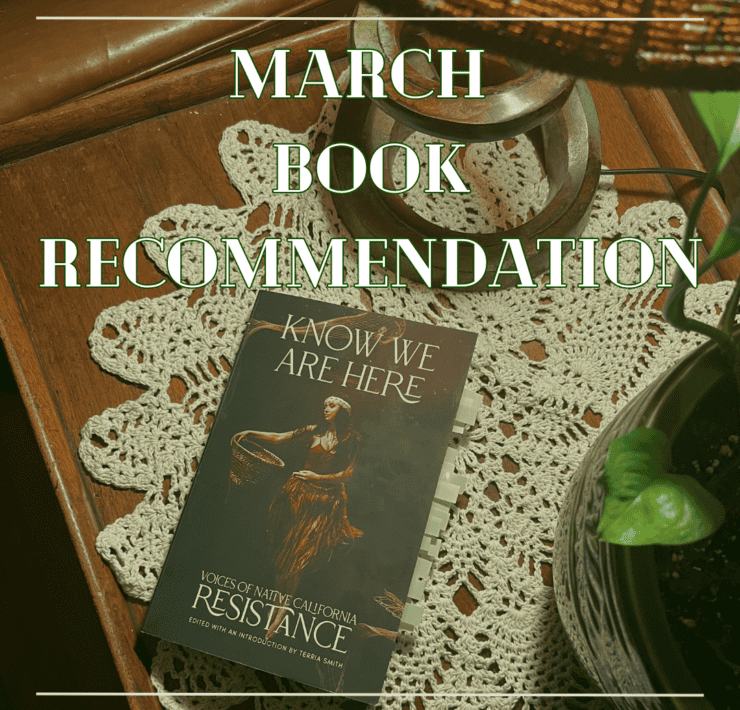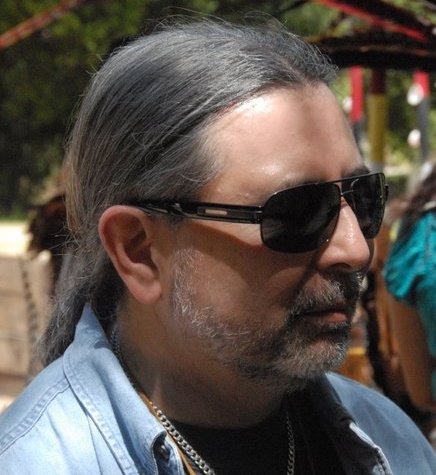
Education Summit at CIC
By Gregg Castro
Those active in the California Indigenous community are aware of one of our most pressing needs: to educate the public about the true history of our state. This is especially true for raising awareness of the “aliveness” of our many thriving communities.
This became very apparent during the saddening-maddening time following the announcement by the Catholic Church that they would finally canonize the spiritual and administrative creator of the system which devastated native peoples throughout much of California: Fr. Junipero Serra. Indigenous activists across the state were energized into battle against the affront to our communities and cultures. What became obvious immediately was that the backlash from this controversy, by the public and many Catholics, was based not on simple differences of interpretation of historical facts. It was a much more insidious problem: the public and most Catholics had been fed the sugar sweet version of a white-washed history that portrayed the ‘Indians’ of California as being “saved” by Serra and his missions, and were exceedingly ‘grateful’ for the sacrifice of the Spanish empire and its priestly soldiers of the Church in coming to “civilize” us savages. The education system not only failed to educate California citizens of what really happened to native peoples that had been caretakers of their landscapes since the dawn of time; they were complicit in the deception.
Various efforts across the years had been made to address this ignorance of the truth in history. As I came up in the early 90’s through the cultural communities of Native People in California, I was myself educated about these efforts by elders who worked tirelessly in addressing this huge gap – and whom are still at it today. Honored elders whom I highly respect, such as Jack Norton (Hupa/Yurok/Cherokee), Professor Emeritus at Humboldt State University; Ed Castillo (Cahuilla/Luiseno), Professor Emeritus at Sonoma State University; and Professor Cliff Trafzer (Wyandot), currently the Rupert Costo Chair of American Indian Affairs at the University of California, Riverside, are just some of the elders I know and admire for their long time efforts to address the ‘education gap’ in the curriculum of our public school system.
What was especially frustrating was that, decades ago, legislation was passed that put the requirement for addressing this vacuum in the state curriculum. But as I understand it, by not putting funding into the legislation, the effort was effectively killed while leaving the impression that the “problem” was actually addressed. I can only say that whatever change has happened within the classroom since that time, up to and including the current times where I have visited my own grandchildren’s’ classes to talk about our living native communities, has been through the small collective efforts of educators in the grade school trenches, not from the state education systems efforts. Some of these innovators were either connected to the native communities, or as has been happening more often, were native people who took it upon themselves to address this lack of education about the California truth in history.
The last several years, in supporting the California Indian Conference (CIC), I have had the honor and privilege to meet and talk with many dedicated activist warriors in the culture wars that have been brewing for some time. These devoted indigenous advocates and their allies have been often working on their own, with little if any support, to address the issues that are vital to the ‘thrivance’ of our native communities. There has been a relentless pursuit by many of them to address this history vacuum in the education system. The vast majority of the public has no idea of the basic facts of what happened during and after the intrusion of the Europeans into our landscape in the 18th century, let alone having a valid interpretation upon which to even discuss relevant issues – such as the Serra canonization.
As often happens in our work, with little or no resources to support us, most native activists had improvised and found innovative ways in which to tackle this problem. There have been a few intrepid warriors that have “infiltrated” the bastions of the education system itself, pursuing degrees within the ‘Newcomer’ system to utilize their standards that they have established – then repurpose them to achieve our goals of enlightening the public. This in spite of – not because of – the scholastic framework that we have been forced to endure in our public schools that we have sent our native children to. They have had to endure the rosy fantasy that has been perpetuated about the ‘saving graces’ of the Mission travesty and the massive losses during and after. After so many years of activism and advocacy to change the framework, many local activists have engaged another route: work from the ground up to change the system.
What I have been privileged to hear the past few years are the community-based efforts of individuals that have learned the system, studied and earned degrees (including PhDs) and used this knowledge of the new state curriculum standards to create their own local teaching curriculums with a more balanced presentation. The native perspective was a distinct part of that new “balance” more so than ever before. The talent, determination, skill and wisdom that these new frameworks showed was astonishing – especially when considering how they were done with little support or resources. As I saw them cropping up in various parts of the state, I began to ask questions about their process and if they were aware of other efforts. Most were not, thinking they were all alone in this work. From my perspective as a ‘civilian’ in this conflict, having no degree, training or skills, just a lot of interest in the truth, I began to encourage people to connect up and build relations between efforts.
At the 2014 California Indian Conference at CSU, San Bernardino, I sat in on a presentation by Crystal Martinez-Alire, PhD candidate at CSU Sacramento, who was showing her curriculum about the native culture in the area of her people, the Miwok, east of Sacramento. She was supported in this work by Rose Borunda, professor at CSU, Sacramento. She had a fascinating viewpoint that was culturally rich and historically balanced. Afterwards, I managed to corner them and ask the same questions, including: Were you aware of other similar efforts? As I had become accustomed, they answered in the negative – but they were eager to know about others. I realized then that I, in my ignorance of the education system, did have a tiny bit to offer: my relations within “Indian Country” could possibly facilitate bringing these efforts together. In these discussions with Rose was born the “Education Summit”. Knowing that I would be involved in the host committee for the following year’s California Indian Conference (2015 at UC Berkeley), I knew that we could facilitate something that could not only be substantial but ongoing, perhaps having it as an annual part of the conference.
The first summit was held the Saturday of conference as a day long symposium. In spite of the dreams of huge standing-room-only crowds that did not materialize . . . the initial summit was still a stunning success. A number of presenters from both academia and native communities shared their curriculum models, frameworks and ideas with the assemblage. What was most important to me about the summit is the introductions and building of ongoing relationships, so necessary for the long term work this process will require, in order to have the profound effect on our education system that is so desperately needed.
Since then, the corridor conversation at the 2014 California Indian Conference has turned into a fledgling consortium of native activists, allies and academia, driven to make a difference. We are scheduled for another day long Education Summit at this year’s conference, taking place October 20-22, 2016 at San Diego State University. We hope to include additional voices, especially from our southern relatives about their work in their communities. We have also participated in other venues, such as the American Indian Education Conference in Redding, discussing our coalition.
We are not the first; we certainly pray we will be standing with the last that need to do this work. We are just a few among many; we are searching out the many others we know are out there in California Indian Country who are tirelessly struggling to make deep and abiding change in their areas so that the public will come to understand how they came to live in such a diverse, enriched and Creator-blessed land: It happened with the sweat, tears and blood of many people who were here long before their ancestors were even aware of the existence of our homelands. In these current times of uncertainty, pulling another layer of wool over the eyes is not the answer. What is needed is the TRUTH of what really happened the last 250 years here in California – both tragedy and triumph – that we survived the gauntlet and are celebrating our thrivance within our homelands once again.
Internet sites related to the Education Summit:
CIC: The California Indian Conference Support Page: ongoing support for the annual event,
- “Education Summit” has its own page on the CIC web site that is still under construction; click on the link (“Education Collective”) on the home page for more information;
- Facebook – the CIC Support team has its own page: https://www.facebook.com/California-Indian-Conference-112227168798000/?ref=aymt_homepage_panel
- Web page for 2016 conference: https://sites.google.com/a/mail.sdsu.edu/cic/home
- Facebook- 2016 has there own page: https://www.facebook.com/caindianconference/


